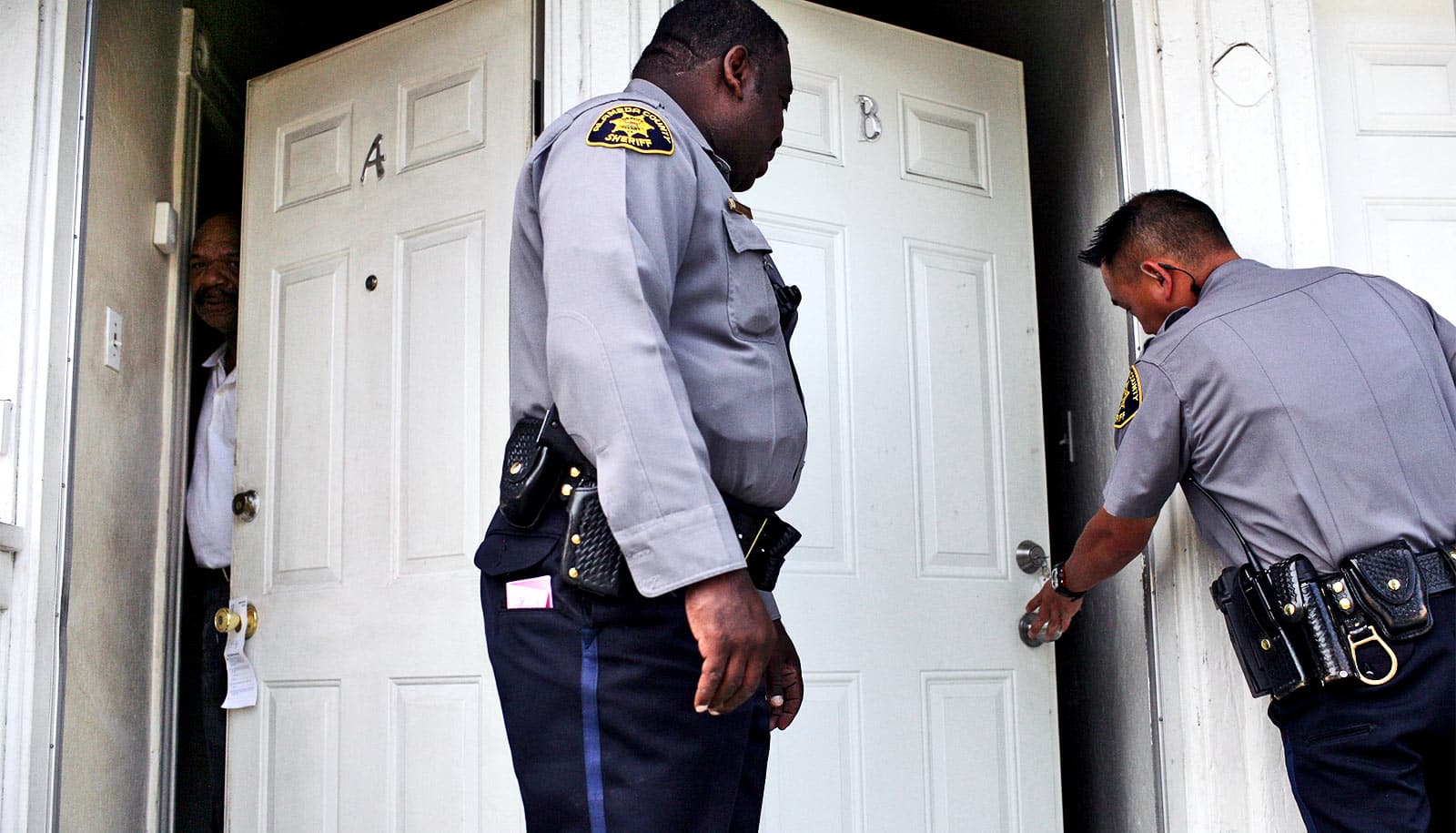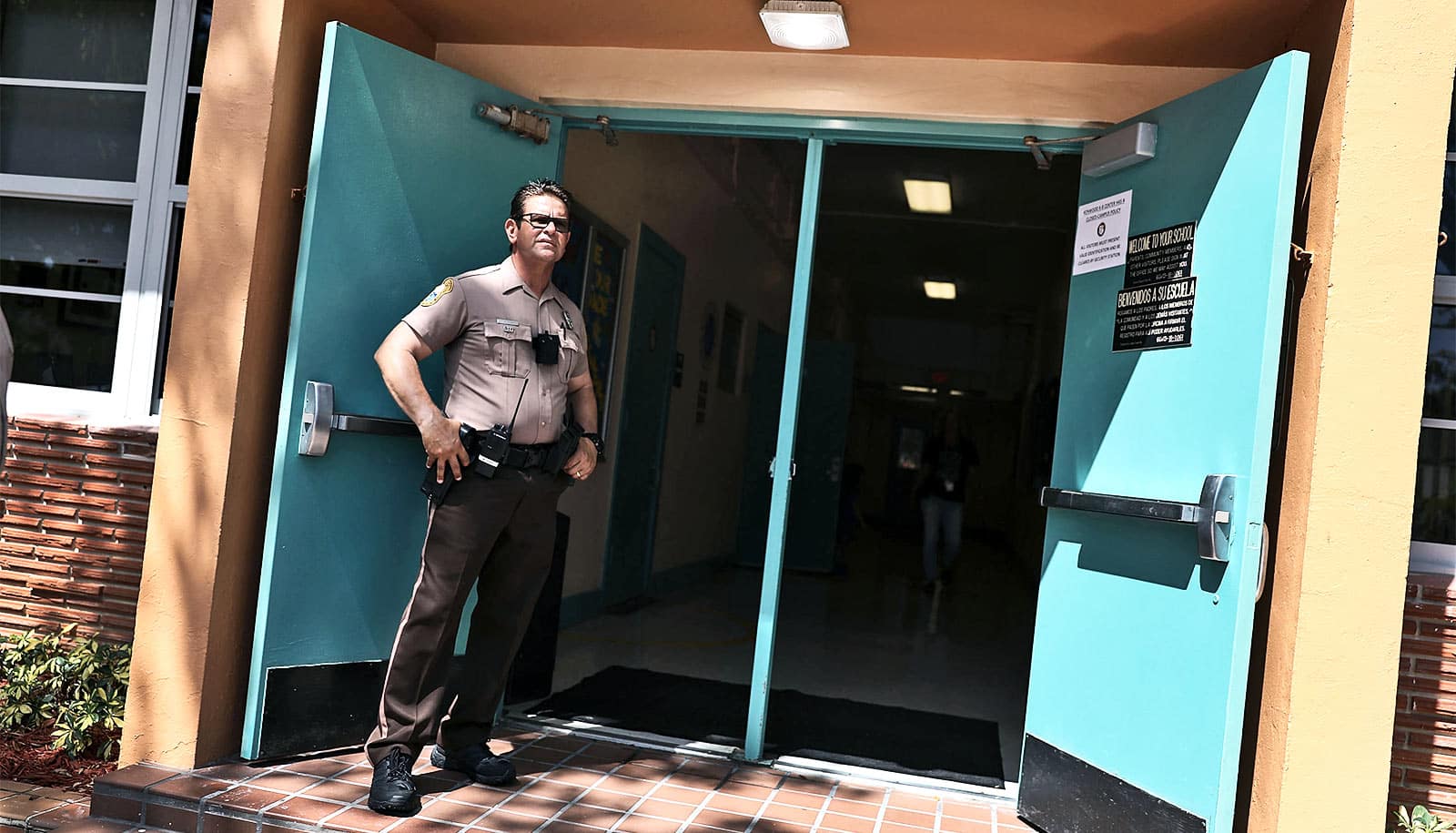Racial discrimination is alive and well in many American neighborhoods half a century after Jim Crow—albeit in less visible, more insidious forms—according to a new article.
In the article in the Michigan Law Review, Deborah Archer, associate professor of clinical law at New York University Law, points to local laws that encourage or require landlords to evict or exclude tenants who have had contact with the criminal legal system as a “critical mechanism for effectuating the new housing segregation.”
While the Fair Housing Act—a section of the landmark 1968 Civil Rights legislation signed by President Lyndon B. Johnson—prohibits inequitable treatment on the basis of race and other factors, recent evidence suggests that many in the real estate industry continue to skirt the law. A fall 2019 investigation by Newsday, for example, revealed that real estate agents in Long Island were steering white clients toward predominantly white neighborhoods and people of color toward neighborhoods with higher minority populations and lower incomes.
Those engaged in this kind of racial steering—along with other illegal practices such as predatory lending—risk consequences, but Archer’s article shows how crime-free housing ordinances enable another, equally harmful form of discrimination that’s perfectly legal. Unlike broader, race-based mechanisms of segregation, crime-free housing ordinances are either overlooked or defended as justified on the grounds that they affect only those who have previously committed criminal offenses.
Here, Archer elaborates on the hidden ways in which these ordinances, ostensibly designed to keep communities safe, create barriers for upward mobility and racial integration:
What’s the history of using the narrative of black criminality as a justification for segregation?
The myth of the black criminal was used to justify many Jim Crow laws. Now that Jim Crow has ended, that rhetoric continues to drive mass incarceration and its deleterious impact on black people and black communities. Crime-free ordinances fit squarely into this history.
They have the purported goal of stemming crime in rental housing, but the truth is that they are more effective at excluding racial minorities and promoting racial segregation.
By allowing—and in some cases requiring—landlords to make housing decisions on the basis of tenants’ contacts with the criminal legal system, these policies treat applicants and tenants as suspects, blurring the line between housing determinations and policing. The embrace of exile and exclusion was also evident in Jim Crow policies around the country, where white people created white-only spaces—such as schools, neighborhoods, parks, and restaurants—by creating and perpetuating narratives of black criminality that justified the exclusion of black people.
How is the problem exacerbated by the phenomenon of white people calling the police on their black neighbors?
White community members who are suspicious or resentful of people of color enforce their racism by “weaponizing” the police, causing a spike in police officers responding to complaints about black people living their lives in white spaces. These increased police contacts cause a range of risks for black people.
When crime-free ordinances are in place, one of those risks is that these police contacts can be used to exclude black tenants from white communities and preserve white residential spaces. In this way, these ordinances have the potential to facilitate legally permissible racial segregation—racially restrictive covenants in disguise.
How do these laws ensnare people who do not pose a threat to the health or safety of other residents, often excluding those desperately in need of housing?
In their most problematic form, these ordinances make alleged criminal activity a violation of the rental agreement, allow police officers to influence whether a potential tenant’s criminal history disqualifies him from rental housing in the community (or whether a tenant must be evicted because of alleged “criminal activity”), and allow revocation of a private landlord’s authorization to rent her property for failing to act on those police determinations.
Significantly, in many jurisdictions a resident does not have to be convicted in order to be evicted. This creates the threat that a mere arrest—or even a stop that results in neither arrest nor conviction—might be sufficient to evict someone from their home or deny someone’s rental application.
Why haven’t Americans focused on the modern—and legal—drivers of racial segregation as much as they should?
I think that this is in part because housing discrimination is often perceived as a relic of history, and of course that is not true. People also frequently believe that lingering segregation is driven by regrettable, but understandable private choices beyond the reach of the law—rational decisions motivated by the desire to live in safe communities with high quality schools, good amenities, and high property values. They do not see the ways that laws and public policy drive residential segregation.
Why does the link between housing policy and the criminal legal system seem natural for many Americans?
The federal government began excluding people with criminal legal system involvement from federally subsidized housing in 1975. The United States Supreme Court sanctioned this regime of exclusion, and with promulgation of crime-free housing ordinances, these policies have now spread from public housing to the private rental housing market.
The truth is that many people really do believe that people who have contact with the criminal legal system are morally deficient, dangerous, and unworthy of second chances. This is true even when people have not been convicted of a crime, and it is especially true when those people are black. Far too many people have bought into these narratives, making it easier for policymakers to justify the sweeping exclusions these ordinances represent.
How can crime-free housing ordinances change to lessen their discriminatory impact?
To truly minimize the potential for perpetuating segregation and discrimination, crime-free housing ordinances should not rely on stops or arrests as a measure of the danger a tenant poses to his or her neighbors. Further, if convictions must be used, crime-free ordinances should not encourage landlords to exclude people with a conviction regardless of how old the conviction is, the nature of the underlying conduct, or the individual’s post-conviction record.
The law should not paint all people with criminal convictions with the same brush.
Source: New York University


